Choosing between a powerful six-cylinder engine and a fuel-efficient 4-cylinder is often one of the foremost dilemmas auto shoppers have when shopping for a car. Interestingly, 8- or 6-cylinder engines aren’t necessarily superior to the trusty 4-cylinder because engine technology has evolved almost hand in hand with the cars getting motivation from them. For this reason, making the best choice doesn’t simply boil down to choosing the most cylinders.
In any case, 4- and 6-cylinders are the most popular mills you can find in road-legal passenger vehicles. The 4-cylinders typically have less than 3.5-liter displacement, while the six-cylinders have more. So, it immediately suggests you get more power with six-cylinder engines and better fuel economy with 4-cylinders but the sophistication of modern engine technology and configurations means the game of power and efficiency is changing.
For years, car enthusiasts got drawn to engines with more cylinders. However, over time, 4-cylinder engines have come a long way and can now easily match and even surpass the power of larger engines. The technology advancements in turbocharging, direct injection, and variable valve timing have allowed engineers to develop some of the most powerful 4-cylinder engines on the market. In this article, we will be taking a look at the top seven most powerful 4-cylinder engines.
A Quick Guide To 4-Cylinder Engines
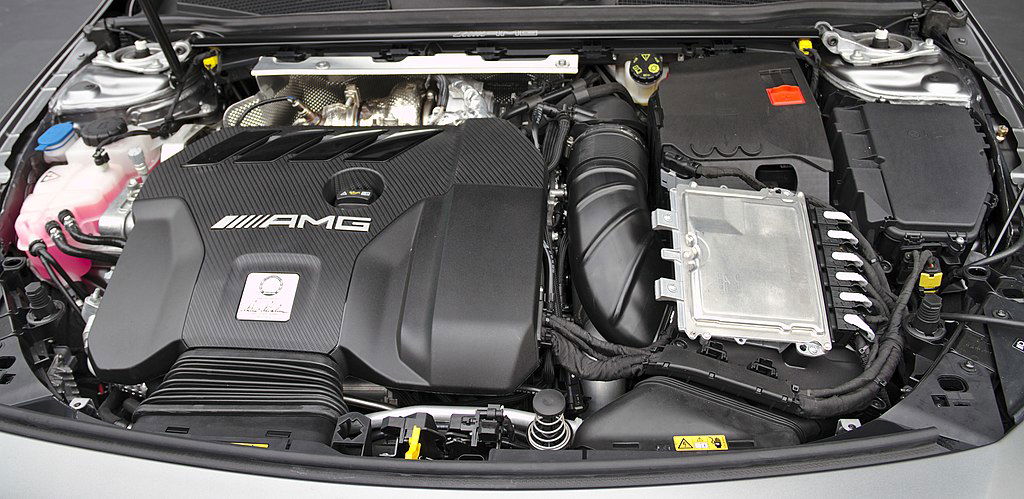
4-cylinder engines, also known as inline-4 or straight-4 engines, are a type of internal combustion engine widely used in various types of vehicles, ranging from small city cars to high-performance sports cars.
They are known for their efficiency, compact size, and versatility in handling different driving conditions. The basic design of a 4-cylinder engine consists of four cylinders arranged in a straight line or a 'V' shape, with a piston in each cylinder.
The pistons move up and down in the cylinders, powered by the combustion of fuel and air mixture ignited by a spark plug. This movement of the pistons generates the power transmitted to the vehicle's wheels via the transmission system.
Overall, 4-cylinder engines are a versatile and efficient choice for many types of vehicles. They offer a good balance between power and fuel economy, making them a popular choice among automakers and consumers alike.
As technology continues to advance, we can expect to see even more impressive 4-cylinder engines in the future.
Advantages Of 4-Cylinder Engines

As already established so far, one of the advantages of 4-cylinder engines is that they are smaller and lighter than engines with more cylinders, making them more fuel-efficient and environmentally friendly.
They are also easier to manufacture and maintain, resulting in lower costs for both automakers and consumers. Due to these advantages, 4-cylinder engines have become more popular in recent years, especially as automakers strive to meet stricter fuel economy and emissions regulations.
4-cylinder engines often get used in small and mid-size cars, as well as in light-duty trucks and SUVs. You can find them in a variety of configurations, including naturally aspirated, turbocharged, and supercharged.
Turbocharging and supercharging can significantly increase the power output of a 4-cylinder engine, allowing it to rival or even surpass larger engines with more cylinders.
The Seven Most Powerful Inline-4 Engines
1. Mercedes-AMG M139 - 416 Horsepower
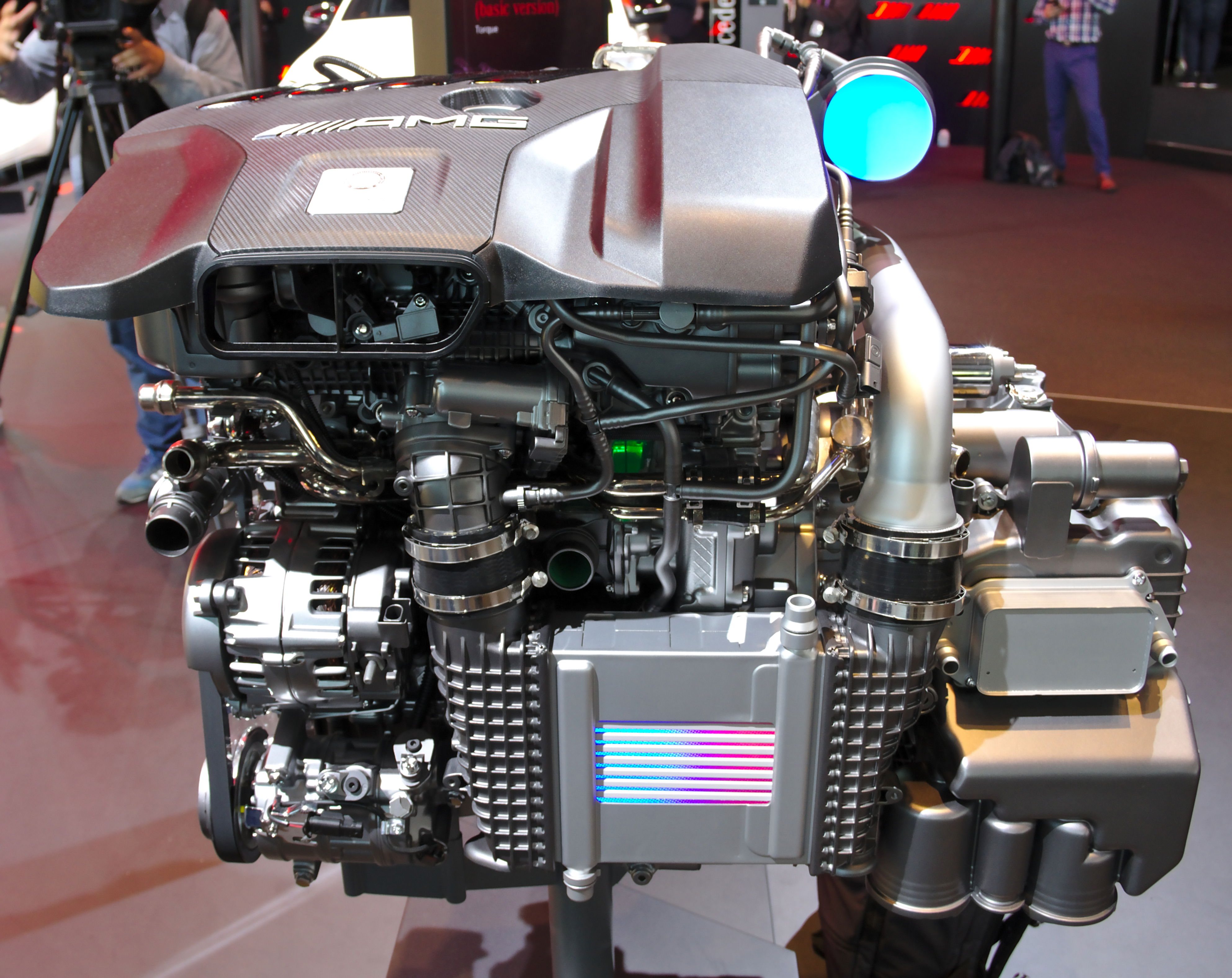
The Mercedes-AMG M139 is a 2.0-liter turbocharged inline-four engine cranking out a whopping 416 horsepower and 369 lb-ft of torque. This engine is found in the Mercedes-AMG A45 S and CLA 45 S, making them the most powerful compact cars on the market.
The M139 is also one of the most technologically advanced engines, featuring a twin-scroll turbocharger, an electronically controlled wastegate, and a unique cooling system that keeps the engine cool even under extreme conditions.
2. Honda Civic Type R - 306 Horsepower

For propulsion, the Honda Civic Type R relies on a 2.0-liter turbocharged inline-four engine that produces 306 horsepower and 295 lb-ft of torque.
Honda mates this engine to a six-speed manual transmission and a limited-slip differential, promoting precise control and quick acceleration. The Civic Type R is also known for its exceptional handling, making it a favorite among driving enthusiasts.
3. Ford Focus RS - 350 Horsepower
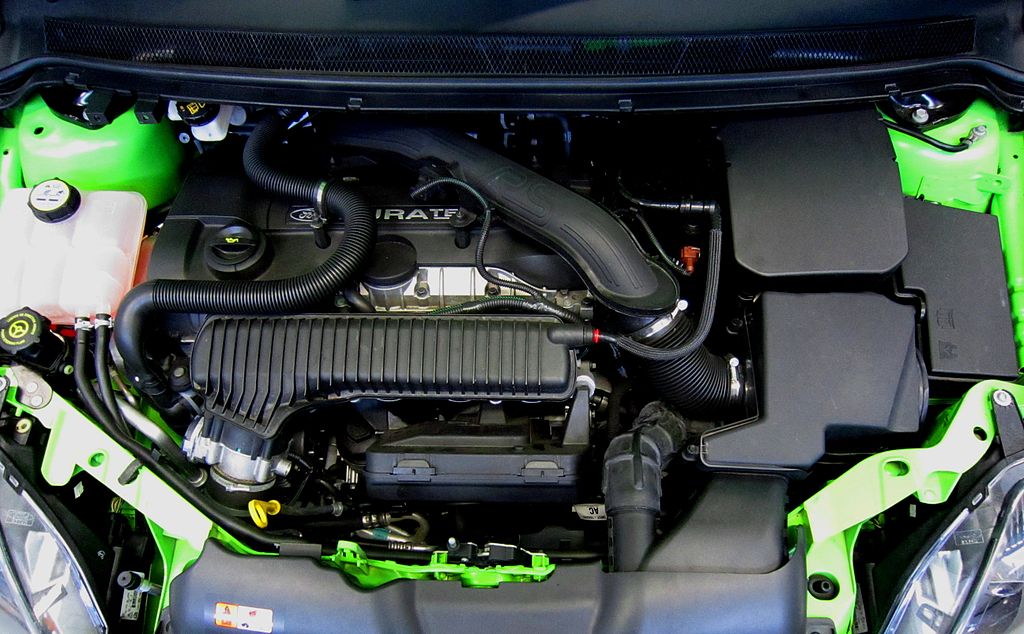
The Ford Focus RS gets powered by a 2.3-liter turbocharged inline-four engine that produces 350 horsepower and 350 lb-ft of torque.
The engine is paired with a six-speed manual transmission and features an advanced all-wheel-drive system, making the Focus RS a favorite among driving enthusiasts. The car can accelerate from 0 to 60 mph in just 4.6 seconds.
4. Porsche 718 Boxster/Cayman - 365 Horsepower
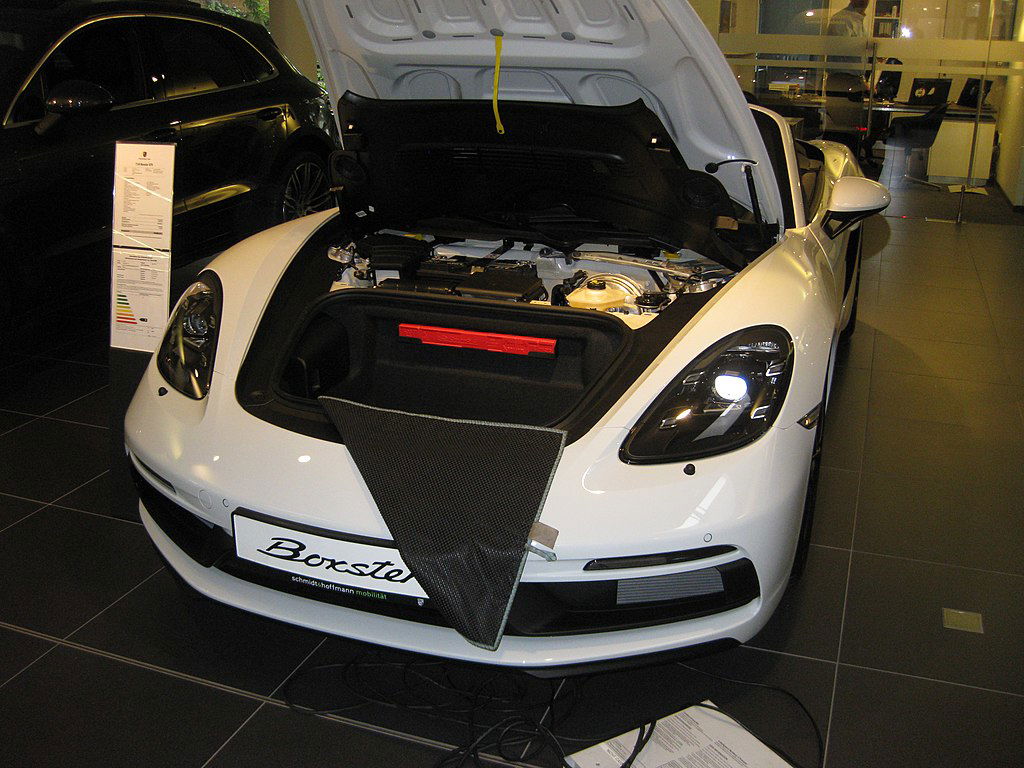
The Porsche 718 Boxster and Cayman are both powered by a 2.5-liter turbocharged inline-four engine that produces 365 horsepower and 309 lb-ft of torque.
The engine marries a six-speed manual transmission or an optional seven-speed PDK dual-clutch automatic transmission. The 718 models are known for their exceptional handling and balance, making them a favorite among driving enthusiasts.
5. Volkswagen Golf R - 292 Horsepower

The Volkswagen Golf R gets its motivation from a 2.0-liter turbocharged inline-four engine that produces 292 horsepower and 280 lb-ft of torque.
Volkswagen paired this engine with a six-speed manual or seven-speed DSG automatic transmission. The Golf R features an advanced all-wheel-drive system and enough urging to accelerate from 0 to 60 mph in just 4.5 seconds.
6. Subaru WRX STI - 310 Horsepower
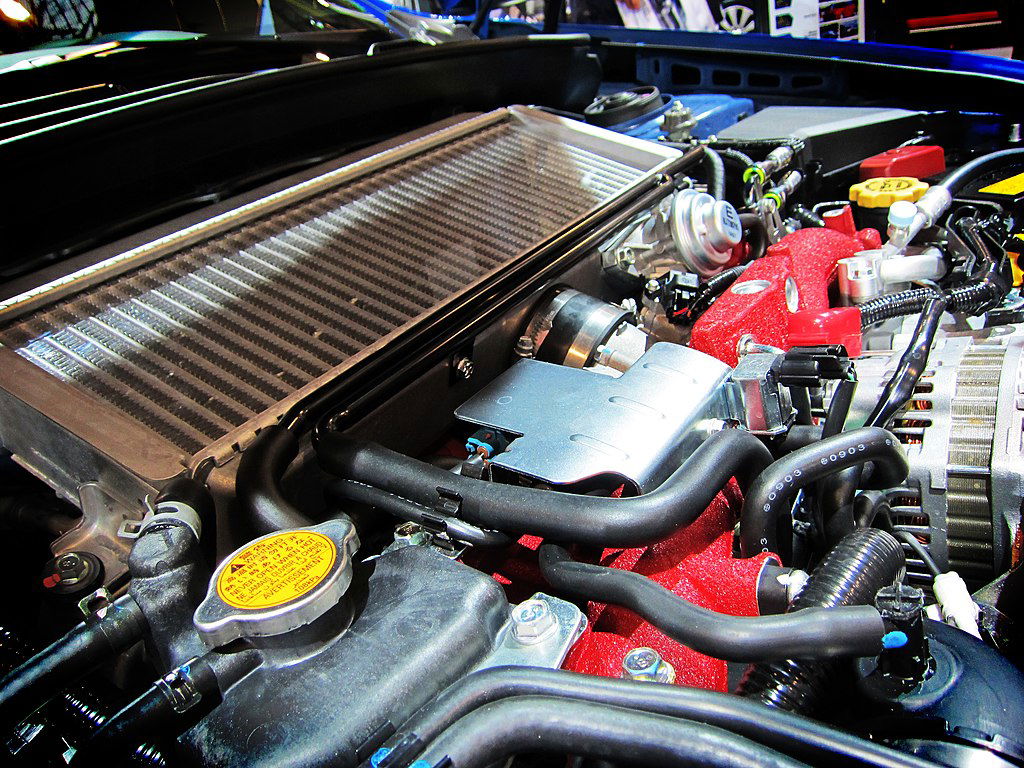
The Subaru WRX STI receives power from a 2.5-liter turbocharged boxer-four engine that produces 310 horsepower and 290 lb-ft of torque.
The engine is paired with a six-speed manual transmission and features Subaru's advanced Symmetrical All-Wheel Drive system. The WRX STI is known for its exceptional handling and is a favorite among rally enthusiasts.
7. Mitsubishi Lancer Evolution - 291 Horsepower
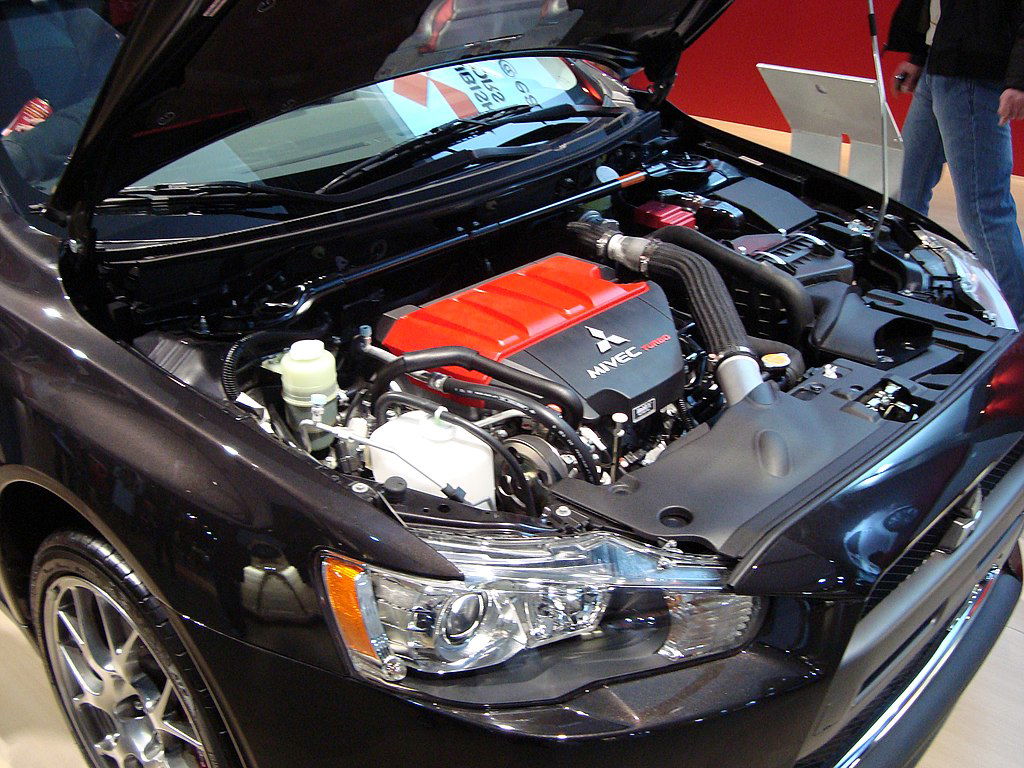
The Mitsubishi Lancer Evolution gets propulsion from a 2.0-liter turbocharged inline-four engine that produces 291 horsepower and 300 lb-ft of torque.
The engine is paired with a five-speed manual transmission and features an advanced all-wheel-drive system.
The Lancer Evolution is known for its exceptional handling and is a favorite among driving enthusiasts. While the Lancer Evolution has gotten discontinued, it remains a popular choice among car enthusiasts.
Notable Mentions
BMW M3/M4 - 425 Horsepower
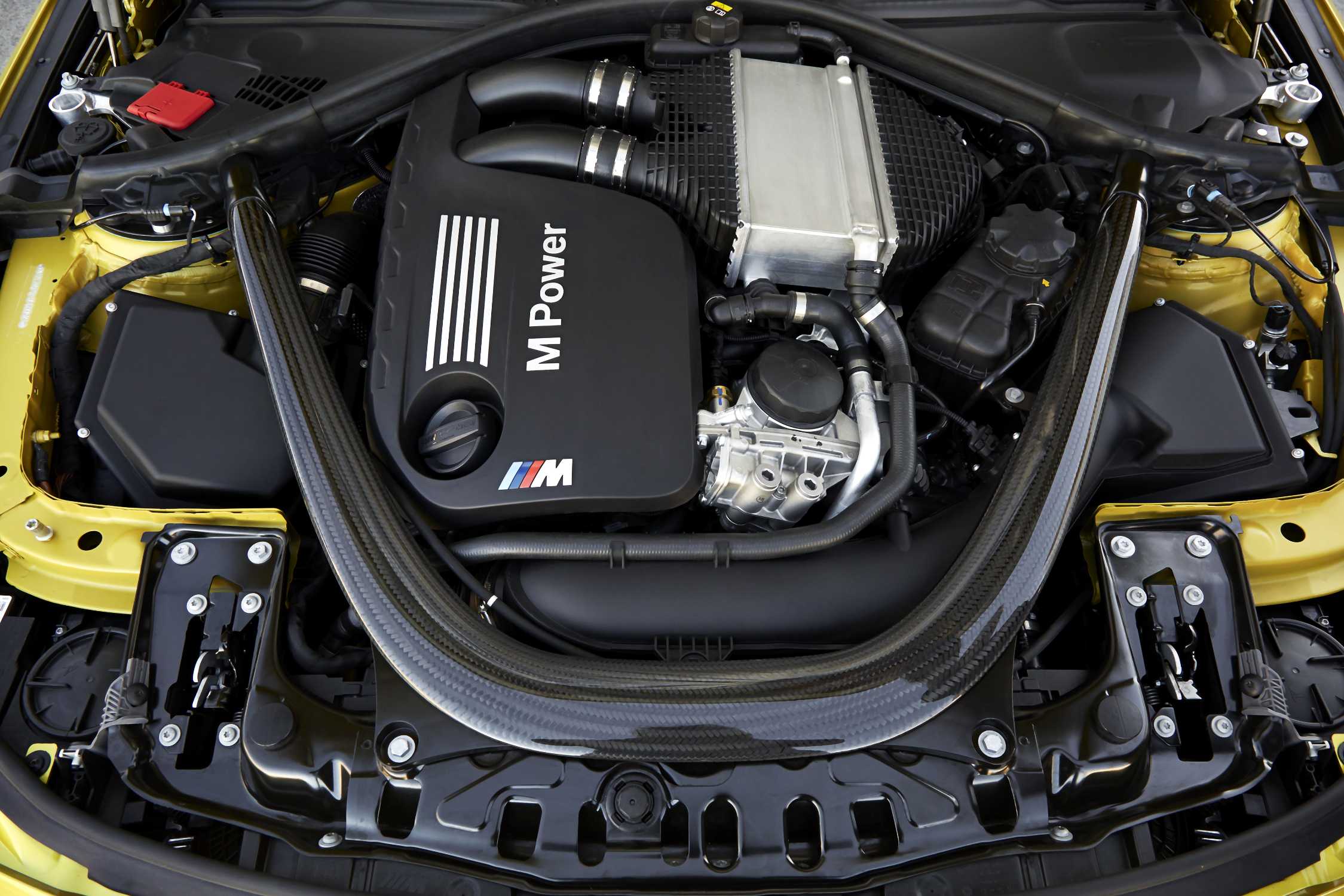
The BMW M3 and M4 are both powered by a 3.0-liter turbocharged inline-six engine that produces 425 horsepower and 406 lb-ft of torque.
While this engine isn't technically a 4-cylinder engine, it's still worth mentioning due to its impressive power output. The M3 and M4 are both capable of accelerating from 0 to 60 mph in just 3.9 seconds, making them some of the fastest cars in their class.
Audi RS3 - 394 Horsepower
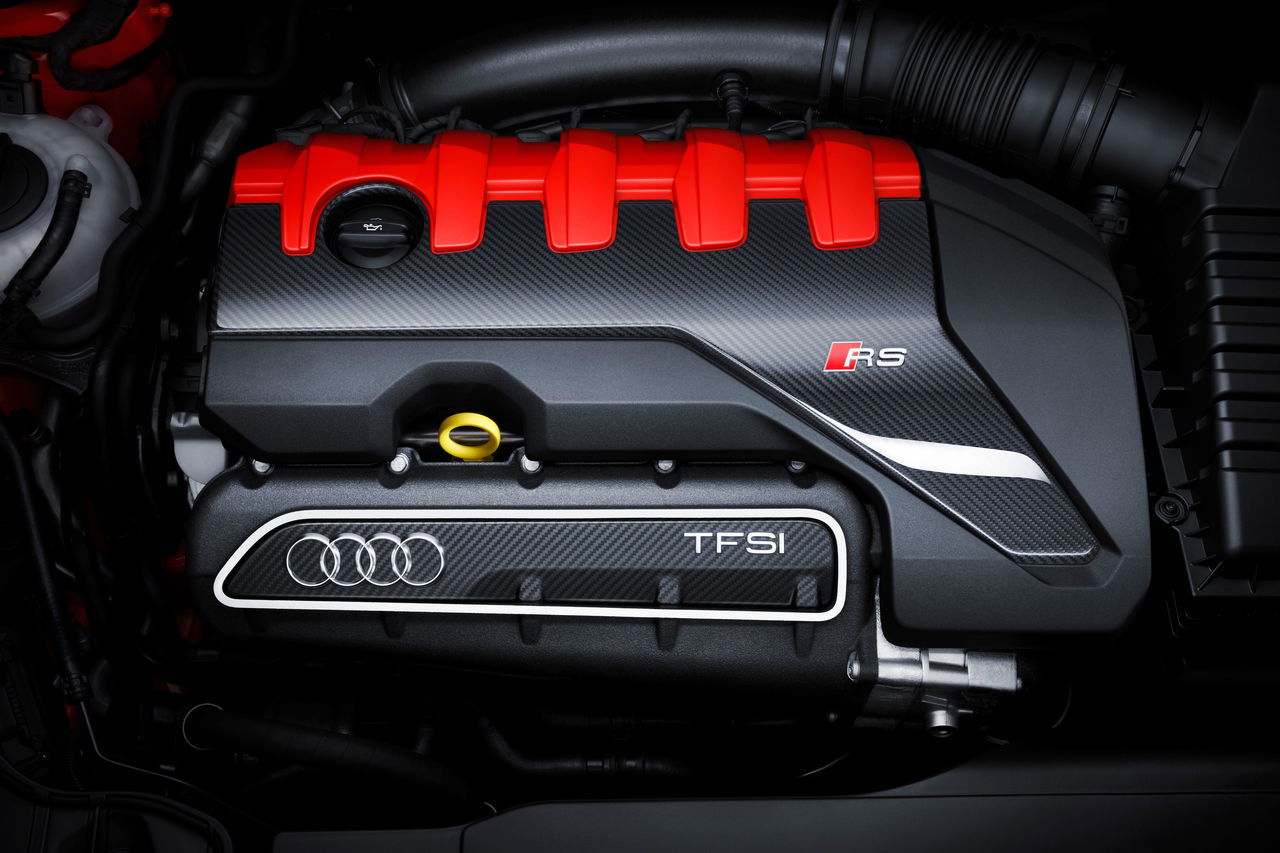
The Audi RS3 gets motivation from a 2.5-liter turbocharged inline-five engine that produces an impressive 394 horsepower and 354 lb-ft of torque.
While it's not technically a 4-cylinder engine, it's still worth mentioning due to its power output and size. The RS3 can accelerate from 0 to 60 mph in just 3.5 seconds, making it one of the fastest cars in its class.
Alfa Romeo Giulia Quadrifoglio - 505 Horsepower
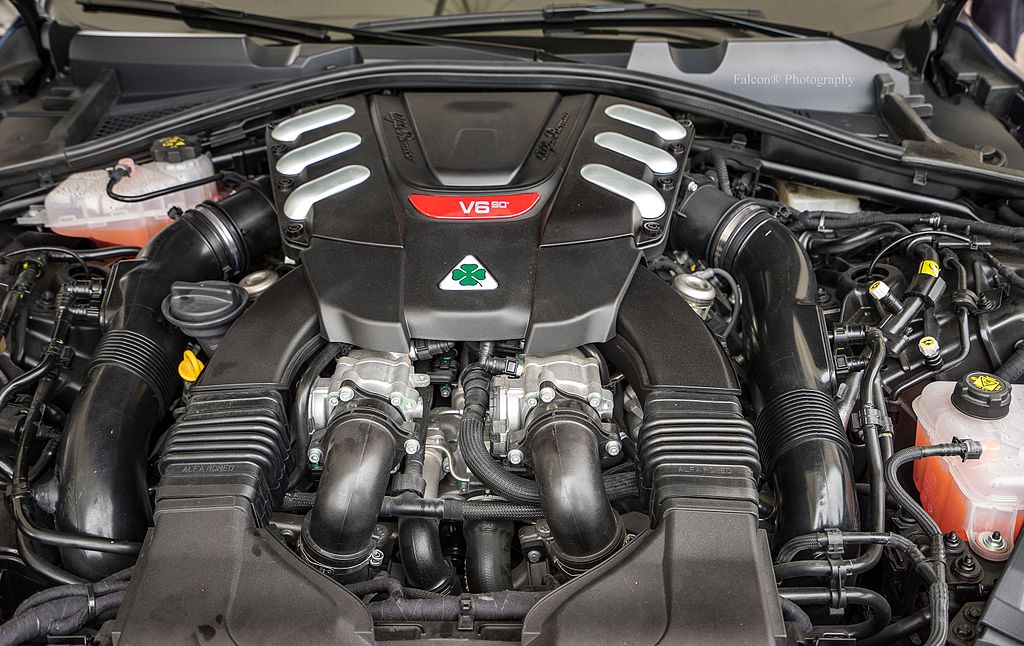
The Alfa Romeo Giulia Quadrifoglio receives power from a 2.9-liter twin-turbocharged V6 engine that produces 505 horsepower and 443 lb-ft of torque.
While it's not technically a 4-cylinder engine, it's still worth mentioning due to its power output and size. The engine is paired with an eight-speed automatic transmission and features advanced technologies such as cylinder deactivation to improve fuel efficiency.
Summary Of The Most Powerful 4-Cylinder Engines
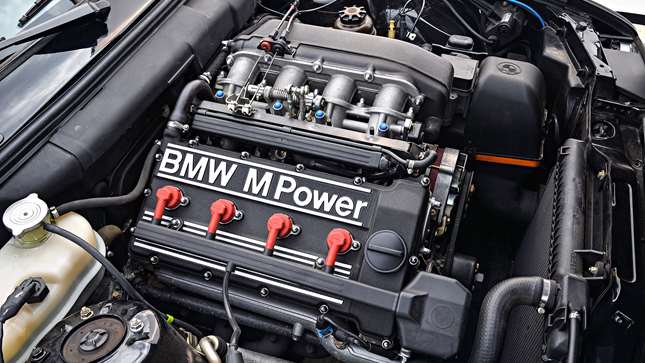
Summarily, 4-cylinder engines have come a long way in recent years and are now capable of producing impressive power outputs. From the Mercedes-AMG M139 to the Mitsubishi Lancer Evolution, these seven engines are among the most powerful 4-cylinder engines on the market.
Whether you're looking for a compact car or a high-performance sports car, there's a 4-cylinder engine out there that can deliver the power and performance you desire. So, the next time you're in the market for a new car, don't overlook the potential of a powerful 4-cylinder engine.